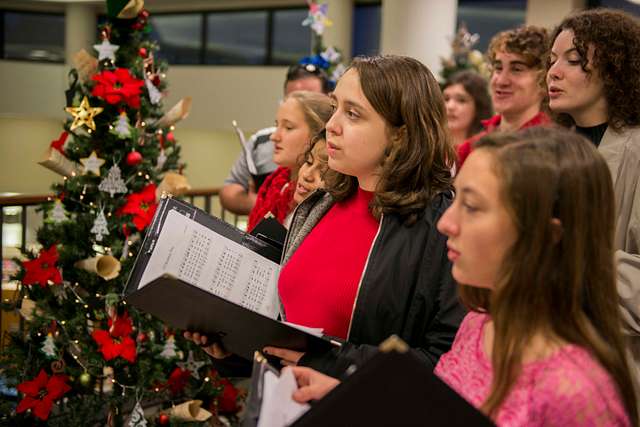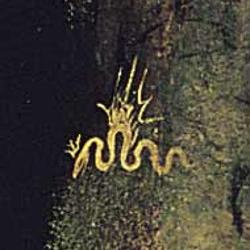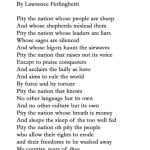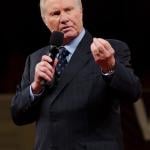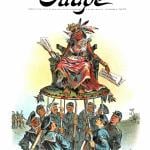Much of our Christmas music, both sacred and secular, is actually Advent music, expressing a longing for a Christmas to come. True Christmas music is about the longing fulfilled, expressing the emotion of joy. There are also songs that look back to Christmas in the past, whether in nostalgia or faith. And Luther’s Christmas songs do something completely different.
Villanova professor Terrence Sweeney is a liturgical purist, believing that Advent is for Advent songs, while Christmas with its twelve days is the season for Christmas songs. But then he noticed that many of our Christmas songs are really Advent songs. He discusses the point in a fascinating post for Plough entitled Not Enough Christmas Music, with the deck, “We barely have any Christmas music at all. We have too much Advent music.”
“Few popular Christmas songs are about celebrating Christmas in the present,” he says. “They are about the longing for Christmas in the future.”
The problem with having so much Advent music masquerading as Christmas music is that it leaves us, well, without Christmas music. We are left in a culture of longing without arrival, yearning without joy, a culture that only arrives home in its dreams. This is particularly dire for those who do not attend Christmas services and do not hear the music of joy. Advent music, secular or religious, is music of a heart that is restless. But it’s not to be a permanent state of restlessness; as Augustine says, “O Lord, our hearts are restless until they rest in you.”
“The season of Advent is the season when we long for our loves to be present so that we can delight in them as here-with-us. Most of what you hear on the radio is music just like this, even if the presence we yearn for is family, friends, a lover, Santa Claus, or just presents.” He observes that often this Advent/Christmas music “is suffused with a rich sense of the minor key, the tonal quality of sorrow but also of aching desire.” In contrast, “Christmas music is saturated with joy, with rest in the one longed for, with the presence of our Love and our loves.”
This has made me attend more closely to Christmas songs. I’ve noticed another category: reflections on Christmas in the past. And that Martin Luther’s Christmas songs break out of the categories. Let’s see how Sweeney’s thesis plays out. The titles in bold are those he himself mentions. I’ve added some more. The bracketed comments are my own, except when I cite Sweeney.
Christmas in the Future
“I’m dreaming of a white Christmas.”
“It’s beginning to look a lot like Christmas.”
Santa Claus Is Coming to Town. [A secular judgement day, when Santa comes to separate the naughty from the nice. (“You better watch out! You better not shout! You better not pout, I’m telling you why. . . “)]
“All I want for Christmas [is you].” [Mariah Carey, Sweeney points out, is here longing for the presence of a loved one.]
“I’ll be home for Christmas.” [This achingly poignant song from World War II depicts a GI yearning for home, ending, though, with the realization that this will happen “only in my dreams.”]
“Deck the Halls.” [About decorating for Christmas. Unusually joyful for the category.]
“Silver Bells.” [About shopping].
“We Three Kings.” [They “traverse afar” and “westward leading, still proceeding,” but they never quite get there.]
Christmas in the Present
“Joy to the World.” [“The Lord is come.”]
“Hark the Herald Angels Sing.” [Hark. That is, you can hear them now. “Veiled in flesh the Godhead see.”]
“O, Come, All Ye Faithful.” [As Sweeney says, this time it isn’t Christ who is coming, we are coming to Him. “Come let us adore Him.”]
“Silent Night.” [“Glories stream from Heaven afar. . .Christ the Savior is born!”]
“O Little Town of Bethlehem.” [“The hopes and fears of all the years, are met in thee tonight.”]
“Angels We Have Heard on High.” [We have heard them! And this is what they sang!]
“What Child Is This?” [The one who is sleeping on Mary’s lap.]
Christmas in the Past
“Away in a Manger.” [“The stars in the sky looked down where He lay.” But the response of faith in the present: the prayer of the last stanza, concluding with “take us to Heaven to live with Thee there.”
“It Came upon the Midnight Clear.” [“That glorious song of old.”]
“Once in Royal David’s City.” [Once the lowly cattle shed stood.]
“God Rest Ye Merry Gentlemen.” [Sweeney classifies this one as Christmas in the present, but it refers to the past: “Remember, Christ, our Savior/Was born on Christmas Day.” But it does, as he says express a joyful faith in that fact.]
“The Christmas Song (Chestnuts Roasting On An Open Fire).” [Nostalgia.]
I invite you to add songs in the various categories, though they don’t all fit neatly. Notice that the secular songs are mostly about “Christmas in the future,” while the religious songs are mostly about “Christmas in the present.” There may be a commercial and a liturgical reason for that, with the secular Christmas songs having been written for the shopping season leading up to the big day, while the Christmas hymns were written for the feast day itself. Also, songs about the birth of Christ that situate that event in the future, such as “Come, O Come, Emmanuel,” are actual Advent hymns and are sung during that season.
But Sweeney’s point seems to hold true. These secular Christmas/Advent songs are indeed largely about yearning, not for Jesus, who is not mentioned, but for a loved ones, whether an individual or a family, or for Santa, or presents, or something the singer is not even aware of. And the music is often wistful and melancholy (e.g., “White Christmas,” “I’ll be Home for Christmas,” “Silver Bells.”)
Whereas the Christmas songs about Christ tend to be overwhelmingly joyful. Sweeney says that even those with a darker tune, such as “Silent Night,” are joyful. “To hold the baby one has longed for is different than to await the baby one longs for. Christmas music is saturated with joy, with rest in the one longed for, with the presence of our Love and our loves.”
The ones that situate Christmas in the past are of two types. The secular ones are nostalgic, looking back on fond memories. Some of the ones Sweeney classifies as “Advent” refer back to “Christmases long, long ago.” As in the yearning for a “White Christmas,” “just like the ones I used to know.” And yet the object of the desire never happens. As in “I’ll Be Home for Christmas,” the singer is only “dreaming.” The religious ones look back to what happened in that manger, as described in the Bible, and often include a statement of faith, supremely in “Away in a Manger,” but also in “Once in David’s Royal City” (“And our eyes at last shall see him/Through His own redeeming love”) and “God Rest You, Merry Gentlemen,” who are urged to “remember Christ our Savior” who was born “to save us all from Satan’s pow’r/when we were gone astray.”
In trying to classify Luther’s Christmas songs, I found that he jumped around freely in time, but then leaped to the present contemporary moment, not just in the moment Christ was born, but in the moment that He dwells in our hearts. “Savior of the Nations, Come” is an Advent hymn, of course, asking Jesus to come, and yet some of its verbs are in the past tense (“God the Father was His source”; “Here a maid was found with child”), some are in the present tense (“For You are the Father’s Son”; “From the manger newborn light/Shines in glory through the night”). And the lyrics also describe His real presence with us now: “Make here your home”; “In this light faith now abides.”
Something of the same can be seen in Luther’s supreme Christmas song, “From Heaven Above to Earth I Come.” In the first stanza, the speaker, presumably an angel, says, I am coming from Heaven to earth to tell you about the Christchild, who “shall be [future tense] the joy of all the earth.” After hearing all about Him, the sings are invited to join the shepherds: “How glad we’ll be to find it so!/Then with the shepherds let us go/To see what God has done/In sending us His own dear Son.” The other stanzas go back and forth between past and present (“Ah, Lord, though You created all,/How weak you are, so poor and small”). The joy Sweeney talks about is certainly here (“My heart for very joy must leap”). And then it gets personal:
Ah, dearest Jesus, holy Child,
Prepare a bed, soft, undefiled,
A quiet chamber set apart
For You to dwell within my heart.
Photo: The Naples Middle High School Choir performs in the Support Site library onboard Naval Support Activity (NSA) Naples during Navy Community Recreation’s annual Holiday Village Tree Lighting event, Dec. 6, 2019, Defense Visual Information Distribution Service via GetArchive, Public Domain.


